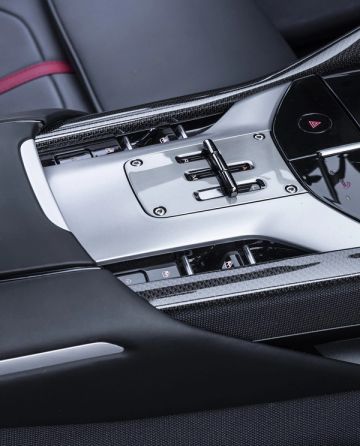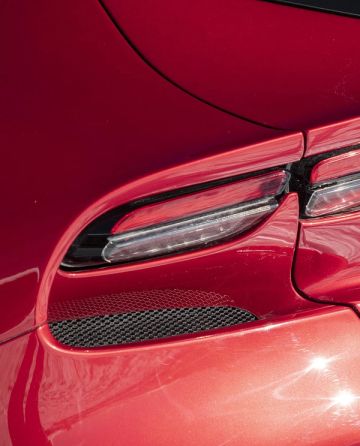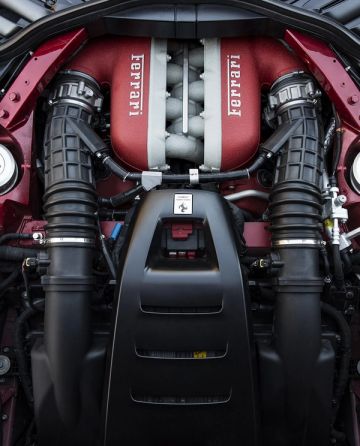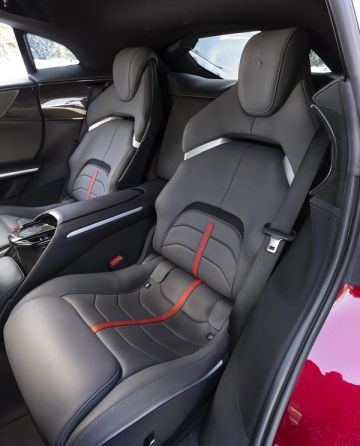
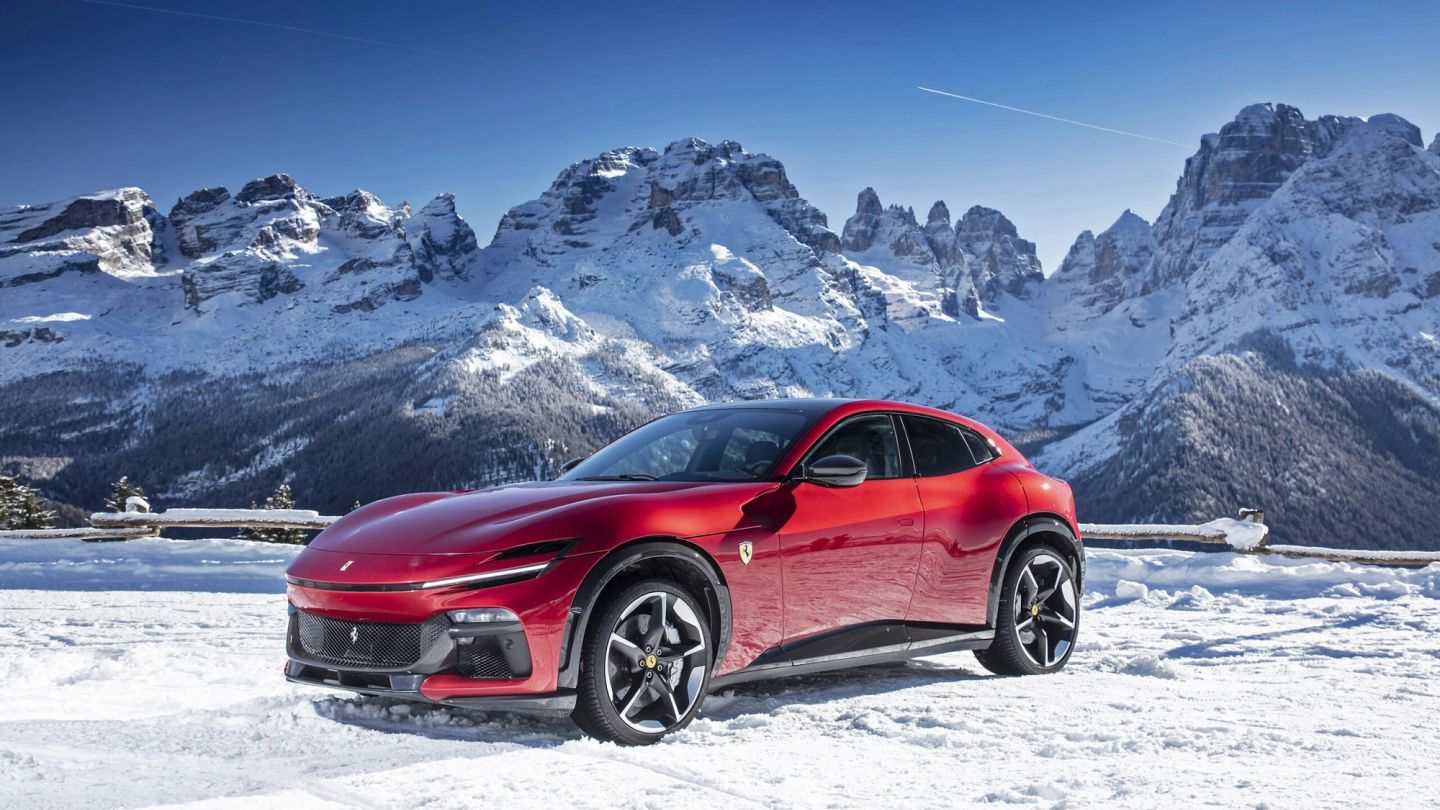
Words: Rory FH Smith
Despite the hype and controversy that’s surrounded the high-riding Ferrari Purosangue, it is not the prancing horse’s first crack at a four-seat, four-door or even four-wheel drive Ferrari. Flick through the marque’s back catalogue of forgotten concepts and you’ll find the four-seat, four-door Pinin, which showed the world what could have been back in 1980.
Thirty years later, the first four-wheel drive Ferrari arrived in the shape of the FF and now, we welcome the Purosangue — the car that promises to deliver a degree of practicality to the Maranello-based marque.
While commentators and critics were keen to point out that Ferrari had ditched its sporting credentials to make an off-roader, the head honchos at Maranello calmly assured people that the Purosangue was anything but an SUV. As Ferrari’s plans for its new car developed, it appeared to have all the hallmarks of another performance four-by-four but, after driving it for two days in the Dolomites, we can confirm the execs weren’t lying.

In Ferrari’s mind, the Purosangue is a performance car with high ground clearance that prioritises comfort and grand touring ability. There’s been no attempt to turn this into a go-anywhere off-roader capable of rivalling a Range Rover. That much can be gleaned from one look at the F1-style steering wheel, which faithfully still includes Ferrari’s wonderful ‘Manettino,’ on which you’ll find ‘Ice’, ‘Wet’, ‘Comfort’ and ‘Sport’ settings. Not so much as a sniff of low range gears or rock-climbing settings to be seen here.
In reality, the Purosangue blends practicality with supercar performance, which is something Ferrari is keen to point out has been in the brand’s DNA since Enzo Ferrari first started making road cars in the 1950s. For the big man, his ideal Ferrari was one with four seats — or a two-plus-two, as it was known back in the day — a two-door grand tourer that could swallow four people plus a bag or two.
“Historically, we have always aimed to develop truly high-performance two-plus-two cars,” says Pietro Virgolin, the Purosangue’s Product Manager. “Cars that embody the Ferrari ethos of driving thrills and offer high levels of comfort. The Ferrari Purosangue is the latest evolutionary step in this quest.”
Occupying a new niche, the Purosangue sits between performance SUVs like the Lamborghini Urus, Aston Martin DBX 707, Porsche Cayenne Turbo GT and the new, mutant breed of high-riding supercars like the Porsche 911 Dakar and Lamborghini Sterrato. After seeing it for the first time in the metal and carbon fibre, it’s possible to understand how tightly formed and packaged the Purosangue is — something Ferrari’s design chief Flavio Manzoni refers to as “brawny muscularity.”
Out on hairpins and twisting mountain passes of the Dolomites, the Purosangue’s naturally aspirated V12 comes alive. Producing 715 bhp, the family Ferrari can cover off the 0-62 mph dash in just 3.3 seconds and crack on to a top speed of just under 200 mph. As the motoring world goes increasingly electric, Ferrari’s choice of powerplant is a curious but intoxicating one, particularly when a straight opens up, allowing the full force of the Maranello-developed V12 to sing out, reverberating off the valley walls.
"The Ferrari Purosangue is the latest evolutionary step in this quest..."
With a masterful flick of the Manettino, Sport mode is engaged, which ups the exhaust volume, firms up the suspension and loosens the traction control to allow for a more playful approach to the mountain passes. With a near 50-50 weight distribution and trick four-wheel steering, the Purosangue is a match for any Ferrari when it comes to thrills, only you have the luxury of showing your driving heroics to an additional two passengers.
By contrast, the Purosangue can pass by almost unnoticed in town, save for its squat, otherworldly looks. In the same way it sparks into life on an open stretch of switchback road, it can also creep about in traffic at low speeds easily, without any excessive exhaust noise, pops and bangs.
In the cabin, it’s business as usual with a few unexpected touches thrown in for Ferrari’s first-four door production car. Two conventionally opening doors can be found at the front, with two rear-hinged ‘welcome doors’ at the back, which give way to the Purosangue’s generously sized interior.
Inside, lashings of leather sit side by side with beautifully laid carbon fibre trim and a new Alcantara material made partly from recycled polyester. With two screens — one acting as the digital dash and the other as a passenger information hub, the Purosangue has a subtle fighter jet feel about its cockpit, with only the fiddly haptic touch buttons on the steering wheel making the experience of changing the infotainment settings or the navigation slightly tricky when moving at pace.
Tamer to drive than the rest of Ferrari’s sports-led stable, the Purosangue still provides a hefty dose of driving fun with the added benefit of carrying a family in comfort. With so much on offer, it’s unsurprising to find the Purosangue near the top end of Ferrari’s price spectrum, with the base car coming in at £312,845. While that’s a high price to pay, it’s unlikely to put anyone off, with the Purosangue largely unmatched and unrivalled in the motoring world. After all, what’s not to like about a naturally aspirated V12 thoroughbred with a penchant for practicality?
Want more car tests? Aston Martin’s new DBX 707 is a supercar disguised as an SUV…
Become a Gentleman’s Journal member. Find out more here.
